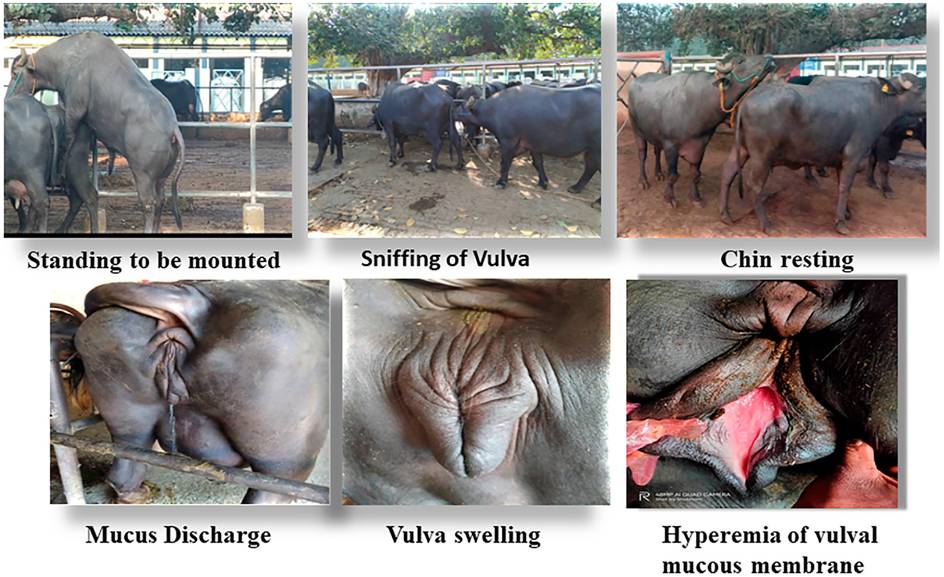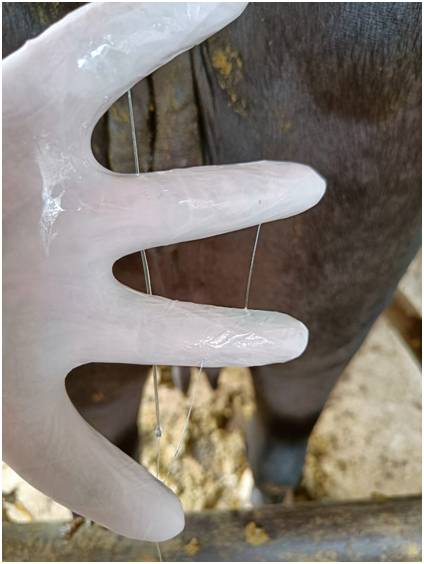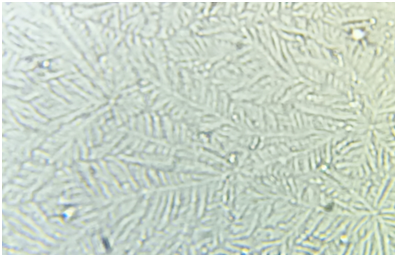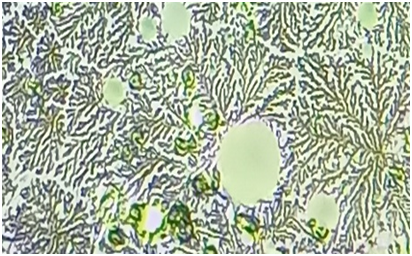The conventional methods of estrus detection are the ones that are used over the years and do not require any expensive system for estrus detection. The methods for estrus detection include using teaser bulls, observing behavioral signs and common laboratory tests. Behavioral signs observations are used most commonly since decades and these signs can be observed by the dairy farmers, with keen observation and help in the identification of the animals in heat and preliminary screening of the animal at the farmers end. Some of the most common behavioral signs that can be observed visually are
- Frequent urination by the cattle and buffaloes in small quantities.
- Reduced feed and water intake.
- Animals will show restlessness and higher activity.
- The animal in heat keeps the tail raised.
- The animals have roughed up tail hair.
- The mounting of cattle and buffaloes leave small rubbing marks on the hind quarters, just in front of the pin bones or below the hook bones. The legs and flanks may get smeared with the mud or dung. The size and freshness of the marks may help in the identification of the animals under heat.
- Bellowing i.e. the animal in the estrus shows higher frequency of vocalization.
- Resting of chin on the neck region of other animals.
- In some cases, the animal may not let down the milk even though the udder is full.
- Animal shows homosexual behavior.
- Animal allows the opposite sex and same sex to mount and remains standing while the bull mounts. This is the most reliable sign of estrus in buffaloes.
- Sniffing and licking of the vulva region of other animals.
- Vulvar edema and redness in the region. The vulvar lips on opening appear as red or pink in color.
- Thick and transparent discharge from the vagina which forms a long thread from the vulva. The mucus may be smeared on the rump region.

Behavioural signs of estrus in buffalo (Singh et al. 2021. Front. Genet. 13:867909 doi: 10.3389/fgene.2022.867909)

Figure: Mucus Discharge from vagina

Spread out mucus on hand
Vasectomised bulls are paraded routinely in the animal herd to identify the female buffalo in heat. This method may give 84% heat detection rate.
The crayons are marked on the rump of the buffalo and the smearing of the markings upon mounting by another animal indicates that the animal is in heat.
In this method oil or water based paints are applied on the spine of a female buffalo and it gets smeared by the mounting or rubbing by the brisket of another animal of the herd indicating that the animal is in heat.
The castrated bulls are fitted with a chin ball marking device. The device has ink or paint which gets released when the animal presses the device/chin and a mark appears on the rump or back of the animal in heat.
These devices are glued to the hair just above the middle region in front of the tail head. Mounting of animals results in the application of pressure and squeezing of the dye. As a result the colour of the dye changes indicates mounting of the animal and heat (www.kamarinc.com).
Analysis of the breeding record may help in detecting the animals in heat as the non-pregnant animals are supposed to come to heat after every 21 days.
Cervical Mucosal Fern Pattern
The cervical mucus discharges when dried on the glass slide, it shows a pattern of the fern leaves.


Fern pattern of the cervical mucus discharge